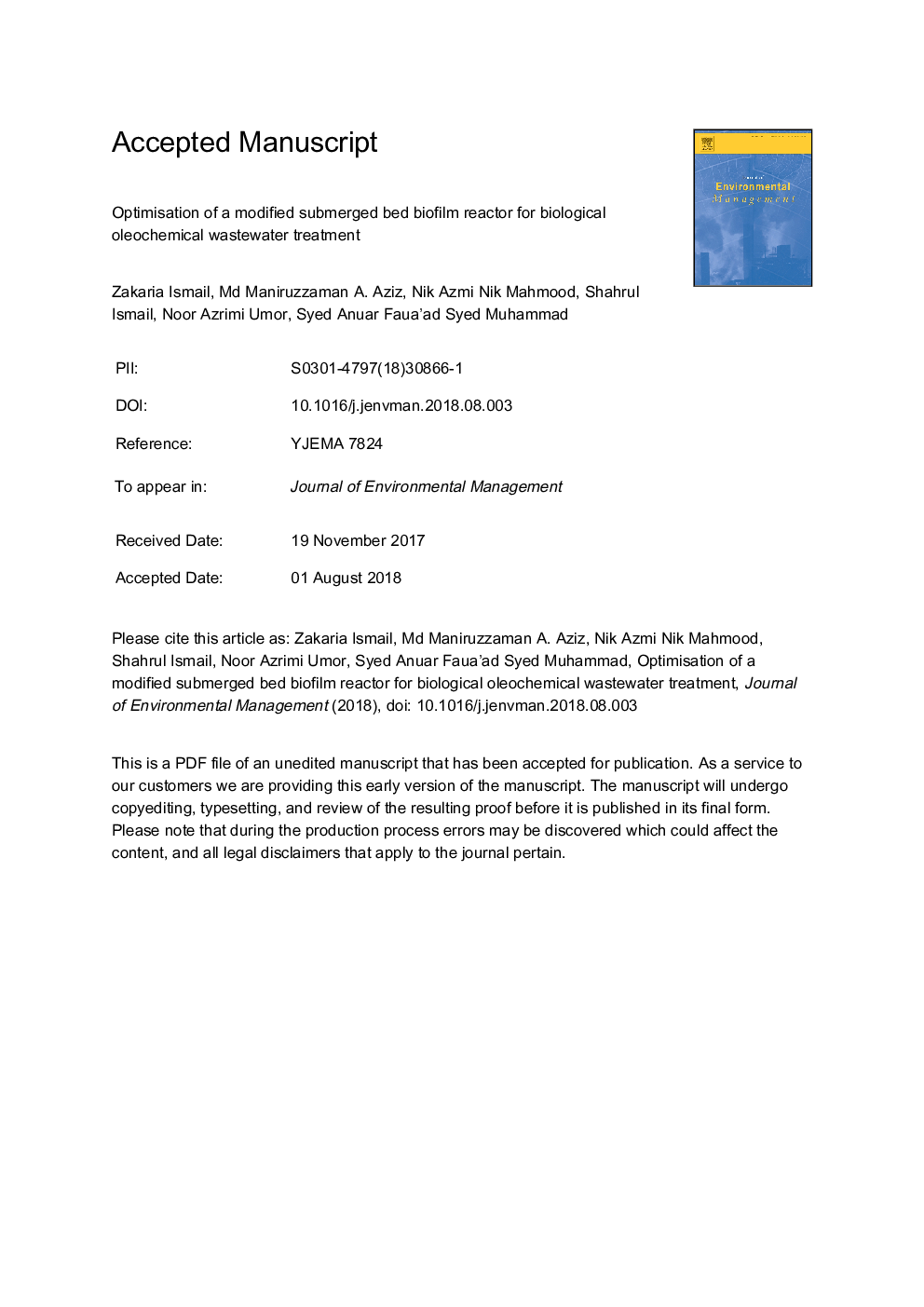| Article ID | Journal | Published Year | Pages | File Type |
|---|---|---|---|---|
| 7475305 | Journal of Environmental Management | 2018 | 19 Pages |
Abstract
Oleochemicals industry effluence mainly contains a high chemical oxygen demand (COD) in a range of 6000-20,000â¯ppm. An effective biological wastewater treatment process must be carried out before wastewater is discharged into the environment. In this study, a submerged bed biofilm reactor (SBBR) was adapted to the biological oleochemical wastewater treatment plant observed in the present study. The effect of wastewater flow rate (100-300â¯mL/min), Cosmoball® percentage in the SBBR system (25-75%), and percentage of activated sludge (0-50%) were investigated in terms of COD reduction. The Box-Behnken design was used for response surface methodology (RSM) and to create a set of 18 experimental runs, which was needed for optimising the biological oleochemical wastewater treatment. A quadratic polynomial model with estimated coefficients was developed to describe COD reduction patterns. The analysis of variance (ANOVA) shows that the wastewater flow rate was the most effective factor in reducing COD, followed by activated sludge percentage and Cosmoball® carrier percentage. Under the optimum conditions (i.e., a wastewater flow rate of 103.25â¯mL/min a Cosmoball® carrier percentage of 71.94%, and an activated sludge percentage of 40.50%) a COD reduction of 98% was achieved. Thus, under optimum conditions, as suggested by the BBD, SBBR systems can be used as a viable means of biological wastewater treatment in the oleochemicals industry.
Related Topics
Physical Sciences and Engineering
Energy
Renewable Energy, Sustainability and the Environment
Authors
Zakaria Ismail, Md.Maniruzzaman A. Aziz, Nik Azmi Nik Mahmood, Shahrul Ismail, Noor Azrimi Umor, Syed Anuar Faua'ad Syed Muhammad,
